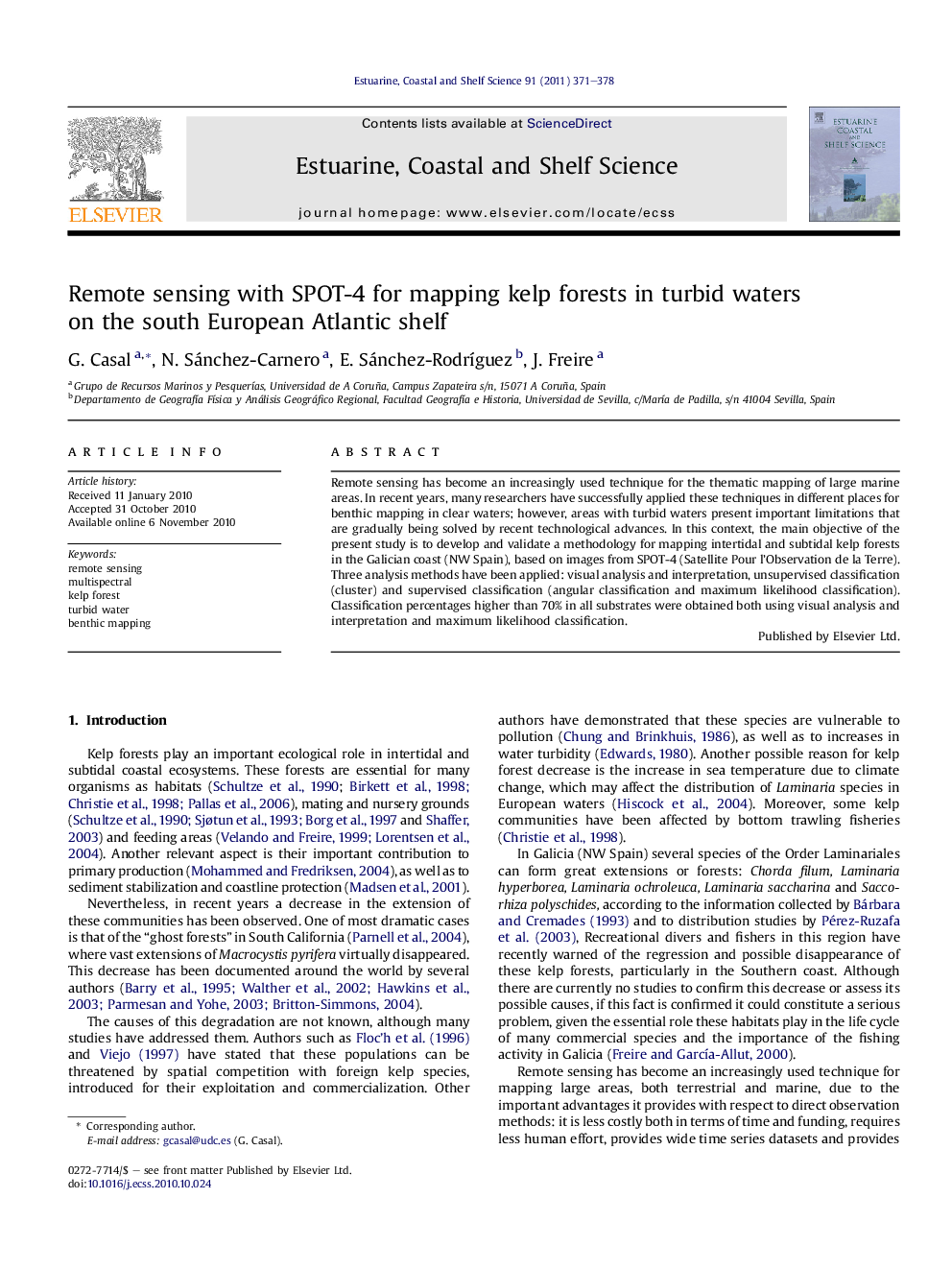| Article ID | Journal | Published Year | Pages | File Type |
|---|---|---|---|---|
| 4540631 | Estuarine, Coastal and Shelf Science | 2011 | 8 Pages |
Remote sensing has become an increasingly used technique for the thematic mapping of large marine areas. In recent years, many researchers have successfully applied these techniques in different places for benthic mapping in clear waters; however, areas with turbid waters present important limitations that are gradually being solved by recent technological advances. In this context, the main objective of the present study is to develop and validate a methodology for mapping intertidal and subtidal kelp forests in the Galician coast (NW Spain), based on images from SPOT-4 (Satellite Pour l’Observation de la Terre). Three analysis methods have been applied: visual analysis and interpretation, unsupervised classification (cluster) and supervised classification (angular classification and maximum likelihood classification). Classification percentages higher than 70% in all substrates were obtained both using visual analysis and interpretation and maximum likelihood classification.
Research highlights► Spot images of kelp forests were visually and automatically classified. ► Spot XS2 band was fittest to overcome spectral signature overlapping in kelp forests. ► Visual interpretation allowed to map sea bottoms upper 10 m depth. ► Sand (submerged and emerged), rock, and seaweeds substrates were classified. ► Supervised Maximum Likelihood substrates classification was 70% accurate.
